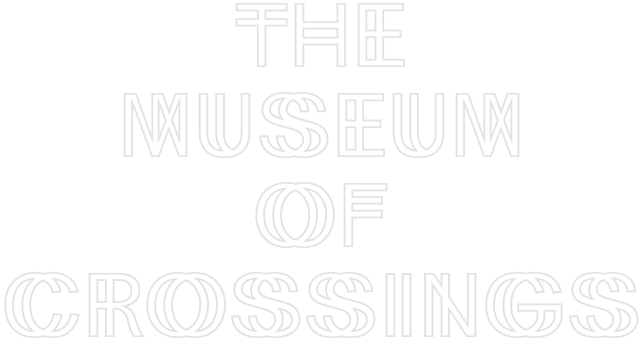The Museum of Crossings is devoted to the crossing of borders. The first association refers to the physical crossing of boundaries, such as the borders of nation-states, which are crossed by tourists, entrepreneurs (and their money and goods), migrants and smugglers, and agents and spies. The spy perhaps best exemplifies what this museum is about: namely, that “borders” are zones of projections and mirror-effects, guarded by (often stereotypical) images and frames, which can be “passed” if one falls into a particular scheme, assumes a good camouflage, or acts like a legitimate “type.” This is true not only of territorial borders, but of all borders of identity: borders are “mimetic zones” in which identity and deviation, similarity and difference, are guarded and negotiated. Above all, they are zones of contagion, of irreversible contact with alterity near and far, real or imagined, fictional or actual—and it is only because of this that they have become zones of control, of hygiene and paranoia, the site of racism, xenophobia, and the projective export and imputation of collective fears. The Museum of Crossings is devoted to different “morphologies” of crossing boundaries. It looks at borders as mimetic zones in which identity and alterity are in permanent exchange, and in which the imaginary and the fictional assume a powerful role. The monster in this context is a figure of mimetic and morphological powers who awaits those attempting to transgress normative or cosmological boundaries.
How is the border between the human and non-human guarded and upheld? Why is it that monsters are frequently hybrids, border-figures between human and animal, or between humans and machines? How can we image the passage, the process of crossing, between animal and human, between machine and man? In a different register: How does the symbolic order and cosmological representation change after acts of destruction and violence? And again: How are we to imagine the mimetic relation of any living organism to its environment, its “milieu”?
The Museum of Crossings is divided into two parts. The first part presents a series of “relational diagrams,” or “border mappings.” These are miniature stories and cartographies, organized along various lines of division in order to expose their very principles of construction. From the impact of the Bikini Atoll nuclear tests on cosmology, to the phenomena of mimicry in insects that visually “adapt” themselves to their environment, to the policing of the line between the normal and pathological in psychiatry, to the “codes” of sexual politics, to so-called colonial mimicry and the apparently universal schemes of racism, a seemingly “natural” line of division in all cases is replaced with the always unstable and shifting distinction between “passive” and “active” agents, between a “figure” (active) and a “background” (passive), and their particular codependency.
The second part of the Museum attends to the specific case of George Psalmanazar, the bogus Taiwanese man who gained a reputation in learned social circles in early eighteenth-century London. His book An Historical and Geographical Description of Formosa (1704), portraying a bizarre wonderland of naked savages, floating villages, Satanism, cannibalism, and human sacrifice, never failed to satiate the curious desire for projecting the alterity of the other. Psalmanazar, despite having white skin and blond hair, could get by as Formosan, partly because of his hyper-exotic performance of eating raw meat and sleeping with his eyes open, and partly because of the lack of proper knowledge about Taiwan in particular and ethnicity in general. The Museum of Psalmanazar is intended to realize his fantastical Formosa, invoking the crossing of his spirit from early Enlightenment London to the Taiwan of the present. Different display techniques, especially the shifting of foreground and background, are employed to recompose a skewed picture. The effect is to arrest the fleeting phantasmagorical images that have always divided the normal and the perverse, the primitive and the modern, the powerful and empowered, and the one and the other in rendering cognitive relations at the crossroads of the fantastical and the real Taiwan. (Anselm Franke and Hongjohn Lin)
